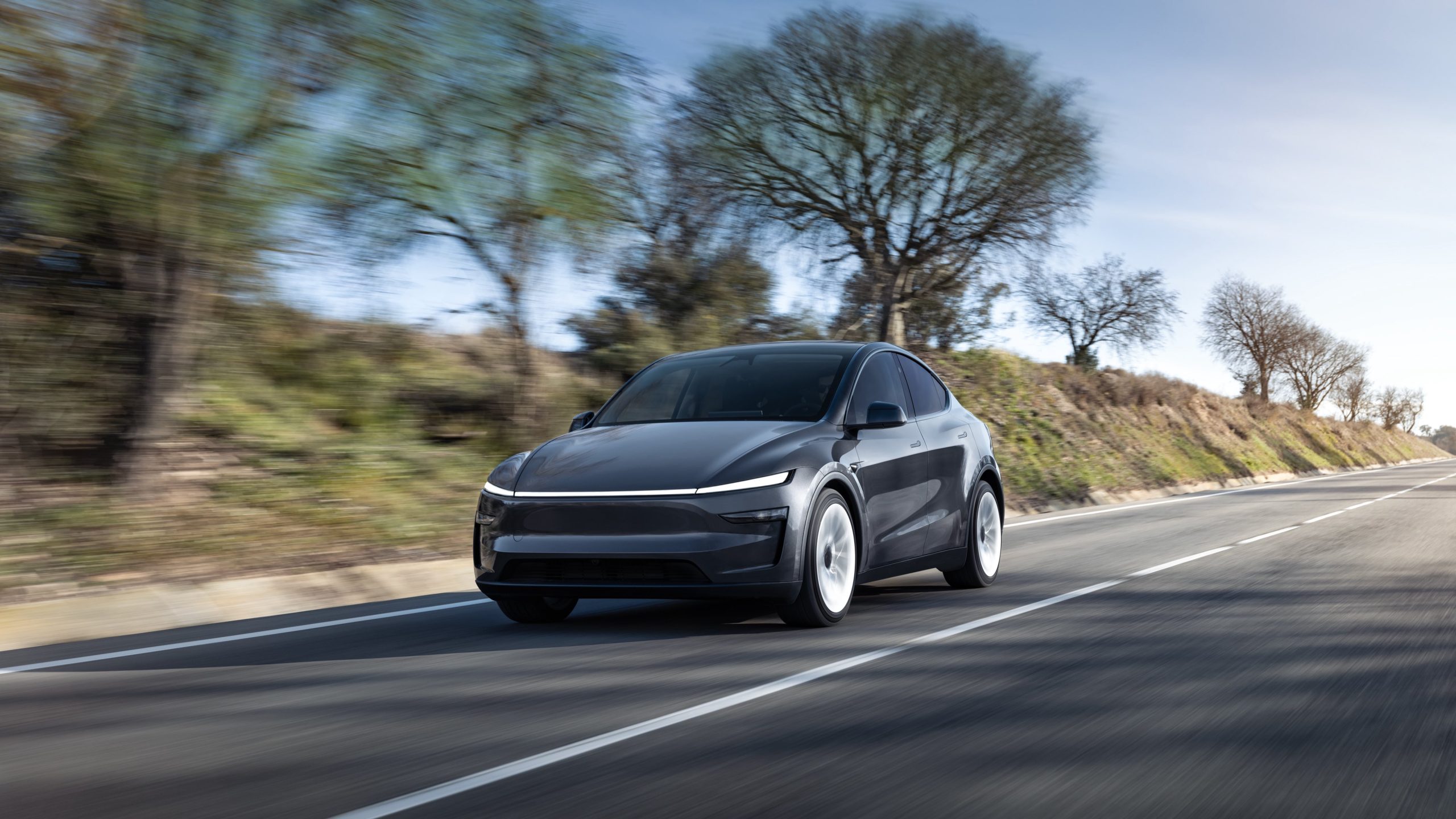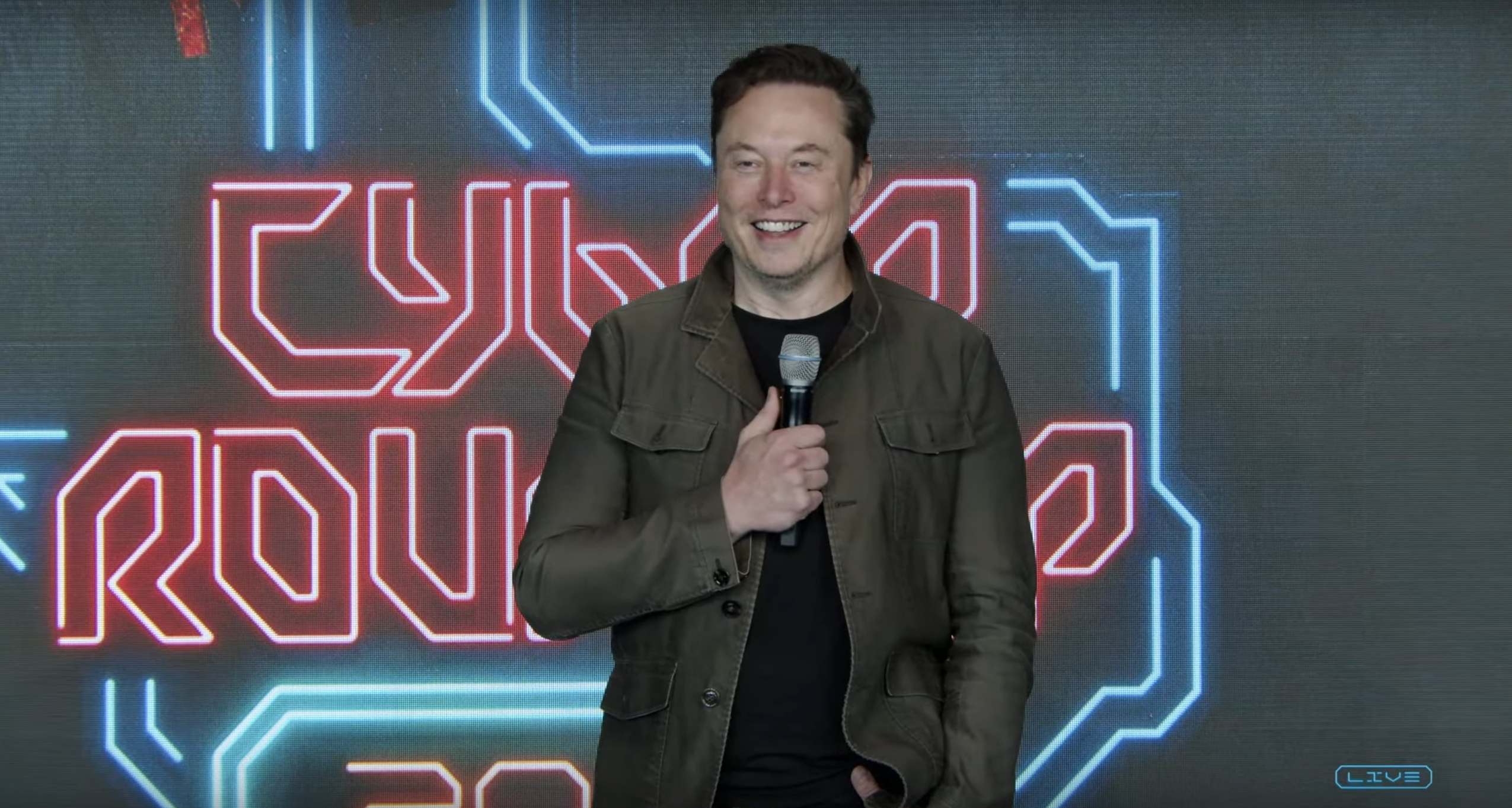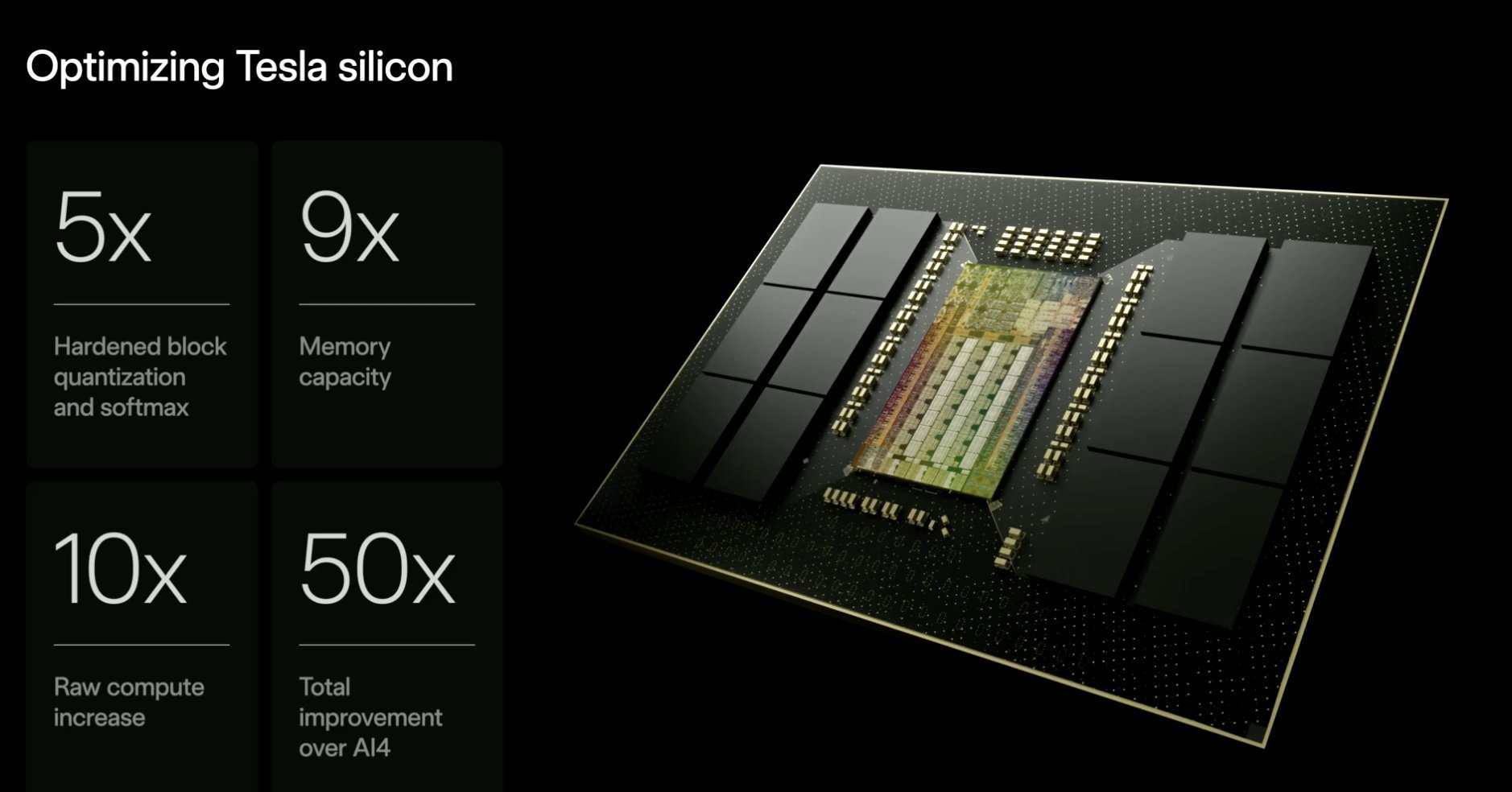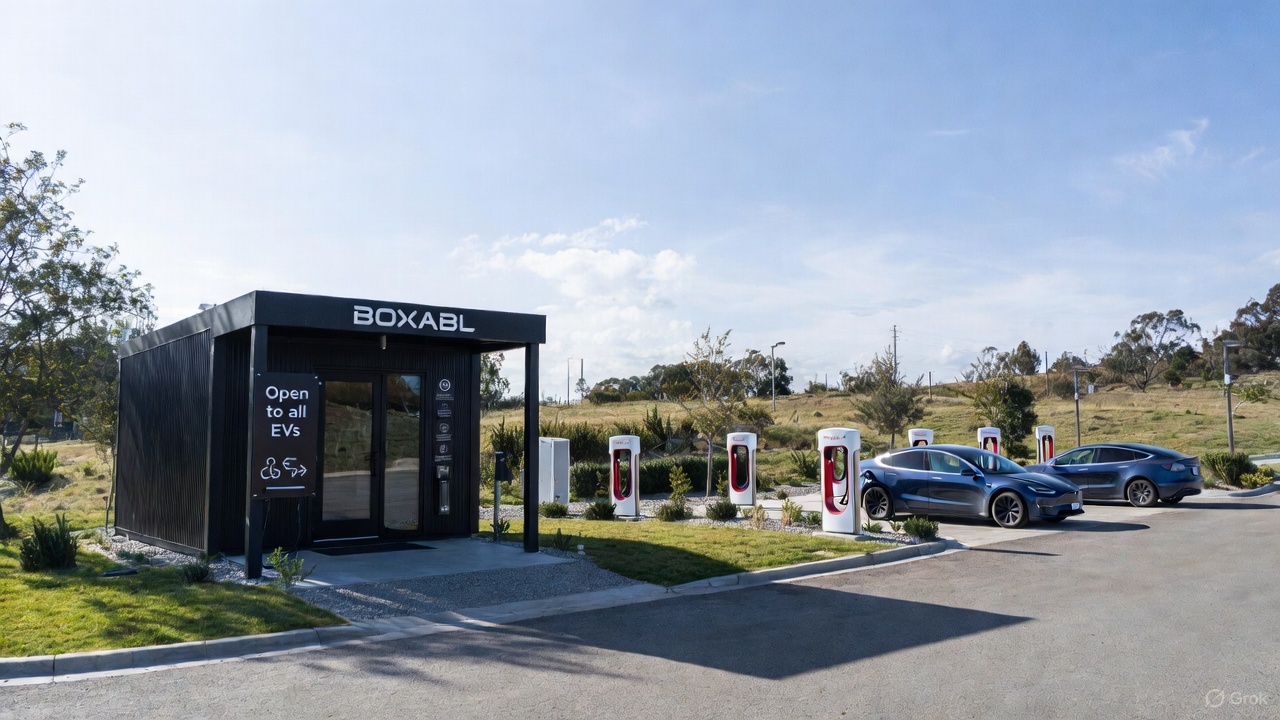News
Tesla named official AV operator in Austin ahead of robotaxi launch
Tesla robotaxis could begin operating around Austin any day now, as echoed by an update to the city’s website.

Just as Tesla prepares to launch its own commercial robotaxi services in Austin, Texas this month, the company has now appeared on the state’s website as an official operator of autonomous vehicles (AVs).
As of Monday, Tesla has been listed as an AV operator on Austin’s official Department of Motor Vehicles (DMV) site, ahead of the company’s expected launch of the long-awaited service sometime this month. The news, which X user Tesla Yoda first spotted, precedes some reports suggesting the robotaxi service could launch in the coming days, and it comes as the city becomes an increasingly competitive stomping ground for the emerging technology.
Although Tesla has been included on the list, the website says that Tesla is still in the testing phase, alongside most of the other AV operators in the city. At this time, Alphabet-owned robotaxi company Waymo is the only operator listed as being in the deployment phase, while Hyundai-owned company Motional is listed as being in the mapping phase.
Tesla is set to initially deploy the service as a limited pilot program using the company’s existing Model Y vehicles, and it will start by testing them in the safest areas of the city within geo-mapped boundaries as extra safety precautions upon launch.
🚨 Elon says by end of June, the public should be ready to take a Robotaxi in Austin without an invitation
Initial launch will be small and riders will be picked by Tesla https://t.co/zEQOkXnE6s
— TESLARATI (@Teslarati) May 29, 2025
Below you can see the full list of AV operators on the Austin DMV website at the time of writing, including both the Alphabet-owned Waymo and the Amazon-run Zoox.
Current list of AV operators in Austin
- ADMT
- Phase: testing
- Parent company: VW
- AVRide
- Phase: testing
- Parent company: AVRide Inc
- Motional
- Phase: mapping
- Parent company: Hyundai
- Waymo
- Phase: deployment
- Parent company: Alphabet (Google)
- Tesla
- Phase: testing
- Parent company: Tesla
- Zoox
- Phase: testing
- Parent company: Amazon
READ MORE ON AUTONOMOUS VEHICLES: Elon Musk just revealed more about Tesla’s June Robotaxi launch
Tesla’s Austin robotaxi launch, Full Self-Driving, and other AV companies
The news follows a report from Bloomberg a few weeks ago saying that Tesla was considering a launch date of June 12 for the service, though the validity of that report is still unclear. Additionally, Tesla could still change its plans on a launch date, though the company’s inclusion on the Austin DMV AV operators list appears to be a good sign either way.
The company has also been running internal pilot programs for the robotaxi service in Austin and around the Bay Area, California, with around 300 test operators operating the vehicles in the Texas city since at least April. Last fall, CEO Elon Musk also said that employees had already been piloting a ride-hailing program around the Bay.
Tesla has long touted its Full Self-Driving (FSD) program as the solution to autonomy, with the system utilizing cameras and real-time driver footage to train its AI neural network on how to drive. By comparison, most other companies utilize cameras and radar systems together, while relying on geo-mapped systems to determine where the robotaxi can operate.
Waymo launched driverless ride-hailing services in Austin through a partnership with Uber, though the company has also been running paid robotaxi rides in various parts of California since last year through its Waymo One app. Other companies such as the Amazon-owned firm Zoox and the Hyundai-led company Motional are also preparing to deploy services in Austin and other U.S. cities.
Tesla’s ‘Project Alicorn’ and what it means for the Robotaxi platform

Elon Musk
Tesla CEO Elon Musk shades Waymo: ‘Never really had a chance’

Tesla CEO Elon Musk shaded Waymo in a post on X on Wednesday, stating the company “never really had a chance” and that it “will be obvious in hindsight.”
Tesla and Waymo are the two primary contributors to the self-driving efforts in the United States, with both operating driverless ride-hailing services in the country. Tesla does have a Safety Monitor present in its vehicles in Austin, Texas, and someone in the driver’s seat in its Bay Area operation.
Musk says the Austin operation will be completely void of any Safety Monitors by the end of the year.
🚨 Tesla vs. Waymo Geofence in Austin https://t.co/A6ffPtp5xv pic.twitter.com/mrnL0YNSn4
— TESLARATI (@Teslarati) December 10, 2025
With the two companies being the main members of the driverless movement in the U.S., there is certainly a rivalry. The two have sparred back and forth with their geofences, or service areas, in both Austin and the Bay Area.
While that is a metric for comparison now, ultimately, it will not matter in the coming years, as the two companies will likely operate in a similar fashion.
Waymo has geared its business toward larger cities, and Tesla has said that its self-driving efforts will expand to every single one of its vehicles in any location globally. This is where the true difference between the two lies, along with the fact that Tesla uses its own vehicles, while Waymo has several models in its lineup from different manufacturers.
The two also have different ideas on how to solve self-driving, as Tesla uses a vision-only approach. Waymo relies on several things, including LiDAR, which Musk once called “a fool’s errand.”
This is where Tesla sets itself apart from the competition, and Musk highlighted the company’s position against Waymo.
Jeff Dean, the Chief Scientist for Google DeepMind, said on X:
“I don’t think Tesla has anywhere near the volume of rider-only autonomous miles that Waymo has (96M for Waymo, as of today). The safety data is quite compelling for Waymo, as well.”
Musk replied:
“Waymo never really had a chance against Tesla. This will be obvious in hindsight.”
Waymo never really had a chance against Tesla. This will be obvious in hindsight.
— Elon Musk (@elonmusk) December 10, 2025
Tesla stands to have a much larger fleet of vehicles in the coming years if it chooses to activate Robotaxi services with all passenger vehicles. A simple Over-the-Air update will activate this capability, while Waymo would likely be confined to the vehicles it commissions as Robotaxis.
News
Tesla supplier Samsung preps for AI5 production with latest move
According to a new report from Sedaily, Samsung is accelerating its preparation for U.S. production of the AI5 chips by hiring veteran engineers for its Customer Engineering team.

Tesla supplier Samsung is preparing to manufacture the AI5 chip, which will launch the company’s self-driving efforts even further, with its latest move.
According to a new report from Sedaily, Samsung is accelerating its preparation for U.S. production of the AI5 chips by hiring veteran engineers for its Customer Engineering team, which will help resolve complex foundry challenges, stabilize production and yields, and ensure manufacturing goes smoothly for the new project.
The hiring push signals that Tesla’s AI5 project is moving forward quickly at Samsung, which was one of two suppliers to win a contract order from the world’s leading EV maker.
🚨🚨 FIRST LOOK at Tesla’s AI5 chip, which will be available in late 2026 or early 2027 pic.twitter.com/aLomUuifhT
— TESLARATI (@Teslarati) November 6, 2025
TSMC is the other. TSMC is using its 3nm process, reportedly, while Samsung will do a 2nm as a litmus test for the process.
The different versions are due to the fact that “they translate designs to physical form differently,” CEO Elon Musk said recently. The goal is for the two to operate identically, obviously, which is a challenge.
Some might remember Apple’s A9 “Chipgate” saga, which found that the chips differed in performance because of different manufacturers.
The AI5 chip is Tesla’s next-generation hardware chip for its self-driving program, but it will also contribute to the Optimus program and other AI-driven features in both vehicles and other projects. Currently, Tesla utilizes AI4, formerly known as HW4 or Hardware 4, in its vehicles.
Tesla teases new AI5 chip that will revolutionize self-driving
AI5 is specialized for use by Tesla as it will work in conjunction with the company’s Neural Networks, focusing on real-time inference to make safe and logical decisions during operation.
Musk said it was an “amazing design” and an “immense jump” from Tesla’s current AI4 chip. It will be roughly 40 times faster, and have 8 times the raw compute, with 9 times the memory capacity. It is also expected to be three times as efficient per watt as AI4.
“We’re going to focus TSMC and Samsung, initially, on AI5. The AI5 chip, design by Tesla, it’s an amazing design. I’ve spent almost every weekend for the last few months with the chip team working on AI5.”
It will be 40x better than the AI4 chip, Musk says.
— TESLARATI (@Teslarati) October 22, 2025
AI5 will make its way into “maybe a small number of units” next year, Musk confirmed. However, it will not make its way to high-volume production until 2027. AI5 is not the last step, either, as Musk has already confirmed AI6 would likely enter production in mid-2028.
News
Tesla discloses interesting collaboration partner for Supercharging
This BOXABL collaboration would be a great way to add a rest stop to a rural Supercharging location, and could lead to more of these chargers across the U.S.

Tesla disclosed an interesting collaboration partner in an SEC filing, which looks like an indication of a potential project at Supercharger sites.
Tesla said on Tuesday in the filing that it was entering an agreement with BOXABL to design and build a Micromenity structure. Simply put, this is a modular building, usually a few hundred square feet in size, and it has been seen at Superchargers in Europe.
In Magnant, France, Tesla opened a small building at a Supercharger that is available to all EV owners. There are snacks and drinks inside, including ice cream, coffee, a gaming console, and restrooms. It gives people an opportunity to get up and out of their cars while charging.
This building was not built by BOXABL, but instead by bk World Lounges. It is likely the final Supercharging stop before people get to Paris, as it is located 250 kilometers, or 155 miles, from the City of Light.
Voir cette publication sur Instagram
Magnant has 56 stalls, so it is a large Supercharging stop compared to most. The building could be a sign of things to come, especially as Tesla has opened up larger Supercharger stations along major roadways.
It is for just a single building, as the Scope of Work within the filing states “a comprehensive package for one Micromenity building.”
NEWS: BOXABL, a company that creates modular, prefabricated buildings, has entered into an agreement with @Tesla.
This is Tesla formally contracting BOXABL to design, engineer, and build a pilot “Micromenity” structure, a compact, modular building unit.
While some info in the… pic.twitter.com/RabJczGpEp
— Sawyer Merritt (@SawyerMerritt) December 9, 2025
Superchargers are commonly located at gas stations, shopping centers, and other major points of interest. However, there are some stops that are isolated from retail or entertainment.
This BOXABL collaboration would be a great way to add a rest stop to a rural Supercharging location, and could lead to more of these chargers across the U.S.
Tesla has done a lot of really great things for Supercharging this year.
Along with widespread expansion, the company launched the “Charging Passport” this week, opened the largest Supercharger in the world in Lost Hills, California, with 168 chargers, opened the Tesla Diner, a drive-in movie restaurant in Los Angeles, and initiated access to the infrastructure to even more automakers.








